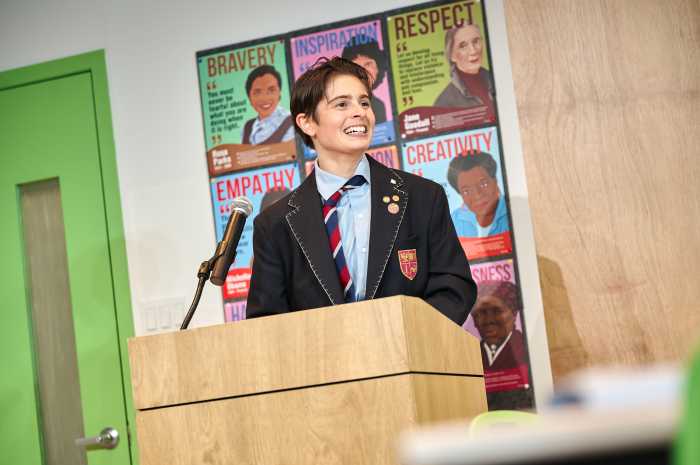The Coney Island of the early 1900s was home to carousels and roller coasters, brothels and freak shows — and thousands of premature babies.
Before neonatal intensive care units became the destination for preemies in the 1960s, hospitals lacked the knowledge and resources to care for them. Many parents watched their children die, but some found hope on Coney Island, where a man named Martin Couney nursed preemies to health in newfangled incubators. Visitors paid 25 cents to see the tiny babies, which Couney used to cover their care.
In “The Strange Case of Dr. Couney: How a Mysterious European Showman Saved Thousands of American Babies,” out this week, Hoboken author Dawn Raffel digs into Couney’s back story and shares her findings with some of the people he saved.
amNewYork caught up with Raffel to learn more about what she uncovered.
How did you discover this story?
I became fascinated by this story when I had first seen the depiction of the exhibition at the Chicago World’s Fair. Who would even want their child to be exhibited in that way? Were these orphans? Were these children of the poor? What was going on? It hadn’t occurred to me that there wasn’t any care in hospitals for preemies. For very tiny preemies like this, the idea was simply that they were doomed.
I was out at the Coney Island Museum with a friend not too long after that, and I was blown away by the fact that this same doctor was at Coney Island for 40 years. And when I started looking around, everything I saw that had been written about Dr. Couney had the same biography, which is that he was educated in Germany and he was the protegee of a very famous French doctor, and he had all kinds of fancy European credentials and had shows and machines in Berlin. Something about it just didn’t ring true to me. I really just thought, I’d like to get to the bottom of this. . . . I slowly started to realize he didn’t have any of the European credentials or the European experience he talked about. But he did have the expertise, and that’s what made him so interesting to me — that he was never a physician, but the care that he was able to give these children was better than anything available in the traditional medical establishment at the time.
The story jumps around in time rather than proceeding chronologically. How did you decide to write it this way?
There were two things. There was a public story of Dr. Couney during his lifetime, and then there was the truth of who he really was. And I felt like in some ways, those two things needed to go side-by-side. I also was just really interested when I stumbled onto the fact that there was a group of leading neonatologists starting in the ’50s who were really fascinated in trying to figure out who he was. I thought it would be interesting to cover their search as well, which you see woven in there. And you see my interviews with the women, which brings us into the present, because I felt like it was a lot more interesting to hear from these women when they were in their 70s, 80s and 90s than just to hear in chronological order about their births.
How did it feel to meet up with Couney’s patients today?
It was so much fun, and I’m still regularly in touch with them. All of these women, first of all, had no ambivalence at all about the fact that they were in a sideshow. They were just extremely grateful that this man had saved their lives. All of them had wondered about him their whole lives because there was so little information and nobody really knew who he was or what his story was. When I interviewed them, all of them kept telling me they’d always wanted to meet another one of Dr. Couney’s patients, and had I run across any others? And that was what gave me the idea to throw a little reunion, and so some of them came together in 2015 and met each other, and they stayed in touch. They’ve become friends.
Do you think Couney’s practice was ethical?
I think this guy was a completely improbable hero. He certainly was a phony doctor, but on the other hand, what he was doing was saving thousands of people who would have died without him. He kind of painted himself into a corner because I think at a certain point, he realized he was going to need to fabricate the credentials if he wanted to stay in business, and there was no one else coming to save these children. The other thing is that for me, the story resonates today because technology continues to force us to make really hard choices about which lives we’re going to save. It hasn’t gotten any easier.
IF YOU GO
Dawn Raffel marks the release of “The Strange Case of Dr. Couney” with several events:
- Scribblers on the Roof reading on Aug. 6 from 8-10 p.m. | Ansche Chesed, 251 W. 100th St., $5 suggested
- “Ask the Expert” lecture on Aug. 11 from 5-6 p.m. | Coney Island Museum, 1208 Surf Ave., Coney Island, $5/adults, $3/seniors and under 12
- Launch party on Aug. 12 from 5-7 p.m. | Coney Island Baby, 169 Ave. A, FREE
- Franklin Park Reading Series on Aug. 13 from 8-10 p.m. | Franklin Park, 618 St. Johns Pl., Crown Heights, FREE





































